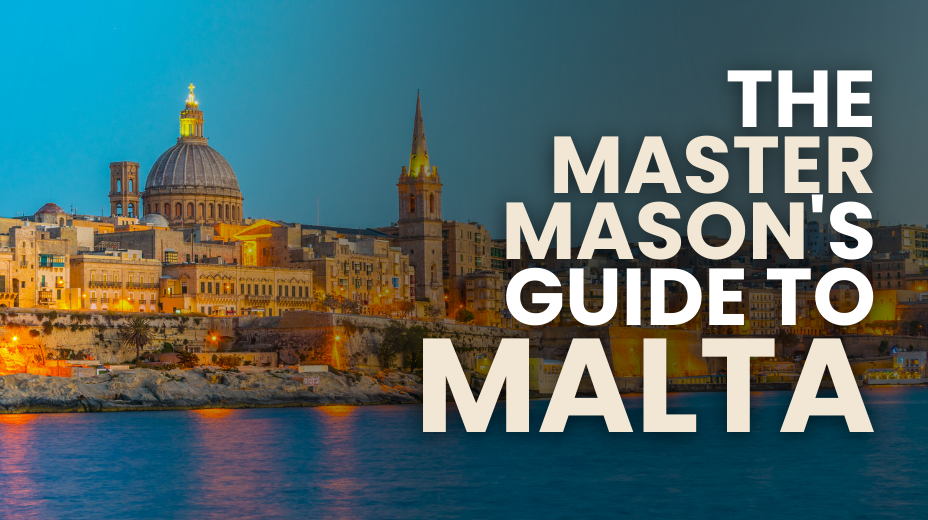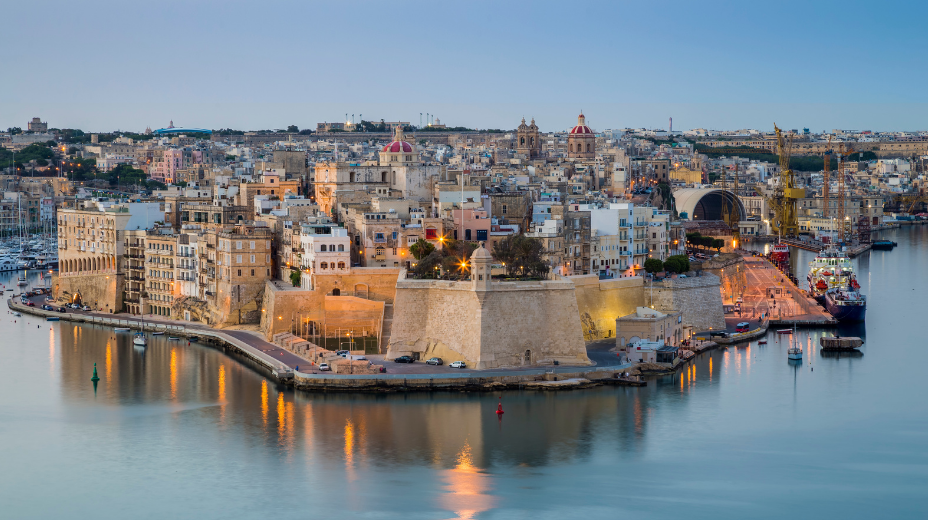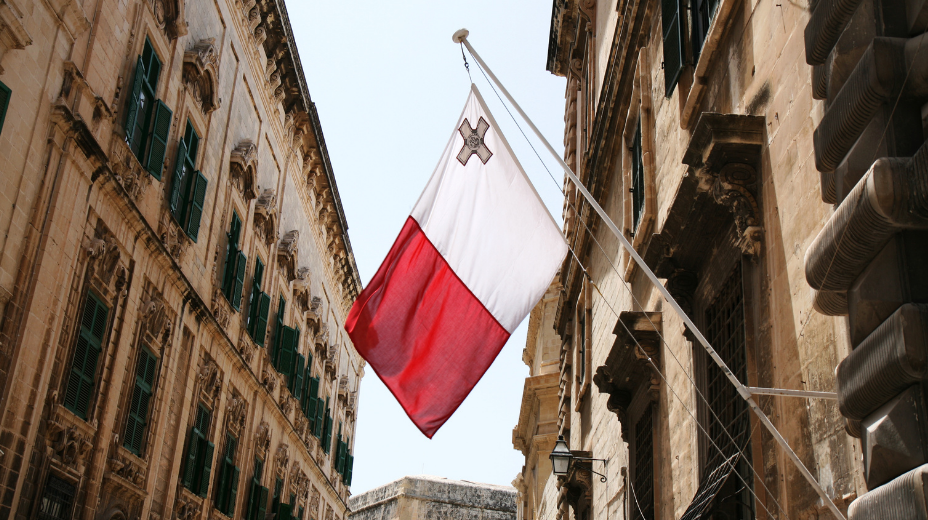Malta offers Master Masons a rare combination of ancient history and an active Masonic tradition that stretches back nearly three hundred years.
Freemasonry in Malta began in 1730 with the formation of “Parfait Harmonie,” the island’s first warranted lodge. By 1741, the craft had already taken root among the Knights of St. John and prominent Maltese nobles.
This tiny Mediterranean nation gives visiting brethren an exceptional chance to explore Masonic heritage while experiencing one of Europe’s most historic destinations.
As a traveling Mason, you’ll uncover surprising links between Malta’s past and the vibrant Masonic practice that continues today.
The island is home to several active lodges under different jurisdictions, including the Sovereign Grand Lodge of Ancient Free and Accepted Masons of Malta and English Constitution lodges that regularly welcome visiting Master Masons.
Whether your goal is to attend lodge meetings, visit historic sites, or simply experience the island’s cultural depth, this guide will help you navigate Malta’s Masonic landscape and connect with local brethren.
You’ll also discover how deeply Malta’s Masonic story is intertwined with the Knights of St. John.
Key Takeaways
- Malta’s Masonic tradition dates to 1730 and includes direct ties to the Knights of St. John
- Several active jurisdictions operate on the island and welcome visiting Master Masons
- The country blends rich Masonic heritage with outstanding Mediterranean culture, architecture, and history

History of Freemasonry in Malta
Malta holds one of the most intriguing Masonic histories in the world, with its first warranted lodge established in 1730 under French jurisdiction.
The island’s early lodges attracted influential nobles and Knights of the Order, shaping both Malta’s cultural development and its Masonic identity.
Origins and Early Development
Malta’s Masonic story begins in 1730, when “Parfait Harmonie” lodge was formed under the auspices of Marseille.
By 1741, the craft had grown rapidly across the island during the rule of the Knights of St. John, many of whom embraced Freemasonry as part of their intellectual and philosophical pursuits.
English Freemasonry also maintained a presence in Malta during the late 1700s, blending French and English traditions into a unique local expression of the craft.
Malta’s Masonic development was shaped by three major influences:
- United Grand Lodge of England
- Grand Lodge of Scotland
- Grand Lodge of Ireland
English jurisdiction became dominant in 1815, eventually giving rise to the Sovereign Grand Lodge of Malta.
Key Historical Figures
Grand Master Manuel Pinto da Fonseca stands among Malta’s most important Masonic figures.
As both a Knight of St. John and a Freemason, Pinto’s dual authority helped cement the craft’s influence among the Order and Maltese nobility.
Many Knights joined local lodges, creating a powerful network that connected Malta to the wider European Masonic world.
Brother Flachslanden, a Knight of Saint John, strengthened this international influence through his work with the Candeur Lodge in Strasbourg.
In the modern era, District Grand Master Sir John Rowland Hodge oversaw the English District until his resignation in 1984, which marked its formal dissolution.
Famous Masonic Events
One of Malta’s most notable Masonic events occurred on May 7, 1983, when the Annual Communication of the District Grand Lodge of Malta was held at Freemasons’ Hall in London.
This meeting became the District’s final gathering.
Its dissolution on March 29, 1984 led to the rise of local Maltese Masonic governance.
Another historic institution, The Saint John’s Lodge of Secrecy and Harmony, played a key role in linking Malta to European Masonic networks during the 18th century.
Influence on Maltese Society
Today, Malta has more Freemasons per capita than any other country, reflecting centuries of cultural and social influence.
The Knights’ adoption of Masonic principles left a long-lasting imprint on Malta’s institutions, architecture, and social values.
Modern Masonic influence appears in:
- Architectural heritage shaped by Masonic-influenced Knights
- Educational institutions reflecting Enlightenment-era values
- Charitable organizations following fraternal traditions
- Cultural celebrations echoing Malta’s Masonic past
The Masonic Malta Degree, an appendant order to the Knights Templar, incorporates Malta’s history into ritual practice and recounts the Order’s journey from Palestine to the island.
Key Masonic Symbols and Landmarks
Malta’s architecture is filled with symbols, motifs, and historic sites that mirror Masonic traditions stretching back centuries.
From prehistoric temples to baroque palaces, Masonic elements appear across the islands in subtle but meaningful ways.
Symbolism Around Malta
Masonic symbolism is woven into Malta’s landscape through geometric designs, carved motifs, and artistic expressions.
The temples of Ħaġar Qim and Mnajdra feature geometric forms reminiscent of symbolic designs familiar to Freemasons.
Symbols to look for across Malta:
- Square and compass motifs in Valletta’s baroque facades
- Eye symbolism on historic churches
- Triple tau markings on fortress walls
The key symbol, representing the opening of the heart for judgment, appears in various architectural details.
Mdina, Malta’s ancient capital, contains intricate stonework and geometric patterns that subtly echo Masonic principles.
Architectural Highlights
Valletta, a UNESCO World Heritage Site, displays strong Masonic influences in its grand architecture.
St. John’s Co-Cathedral incorporates symbolic patterns in its marble floors and decorative designs.
The Grandmaster’s Palace includes:
- Symbolically aligned ceiling geometries
- Compass rose patterns in marble flooring
- Pillars representing strength and establishment
Fort St. Angelo also contains carvings and markings recognizable to Masonic travelers.
The Auberge de Castille, once the seat of the Knights’ Castilian contingent, demonstrates proportions and architectural choices aligned with classical and Masonic principles.
Secret Signs and Meanings
Throughout Malta, subtle Masonic signs can be found in religious buildings, civic architecture, and historic fortifications.
Common hidden elements include:
- Symbolic hand positions in statues
- Proportional doorways reflecting sacred geometry
- Coats of arms with embedded Masonic motifs
The island’s connection to ancient Masonic landmarks appears in city layouts, especially in Valletta’s grid-like structure inspired by Renaissance geometry.
Decorative arts, metalwork, and stone carving throughout Malta also incorporate symbolic elements.
Connecting with Malta’s Masonic Community
Malta’s Masonic community is active, welcoming, and accustomed to hosting traveling brethren.
Regular lodge meetings and twice-yearly Masonic gatherings make the island an ideal destination for visiting Master Masons.
Meeting Local Brethren
The Malta Group of Lodges is the primary point of contact for visiting Masons.
Most communication is in English, and lodge secretaries respond promptly to visiting brethren.
Best ways to connect:
- Email lodge secretaries prior to travel
- Visit the Masonic Hall in Valletta on Saturday mornings
- Attend Malta Masonic Week events
The Sovereign Grand Lodge of Malta recognizes the three craft degrees and Royal Arch, aligning with many international jurisdictions.
Local brethren often extend invitations for meals or coffee following meetings, offering genuine fellowship.
Masonic Events and Gatherings
Malta Masonic Week is held twice per year, in May and October.
Each gathering includes degree work, lectures, and social events, hosted at the English Masonic Hall in Valletta.
Event Overview:
- When: First Saturday of May and October
- Where: Valletta Masonic Hall
- Duration: One week
- Orders: Craft, Royal Arch, Mark, Knights Templar, and more
Throughout the rest of the year, most lodges meet monthly, adjusting during the summer due to Malta’s heat.
Visiting Protocols
Visitors must bring proper credentials to attend lodge meetings.
The Masonic Hall is open on Saturdays from 11:00am to 3:00pm, with guided tours at 12:30pm.
Required Documents:
- Valid dues card
- Photo ID
- Letter or certificate from your Grand Lodge (if requested)
- Lodge contact information
Dress standards follow traditional rules—dark suits for meetings and black tie for formal events.
Notify lodge officers in advance about dietary or accessibility needs.
Arrive early to allow time for introductions and credential checks.
Travel Tips for Masonic Explorers

Malta offers a rewarding experience for Masonic travelers, combining lodge visits with rich cultural exploration.
Planning ahead ensures a smooth and meaningful visit.
Planning Your Masonic Tour
Start your planning by contacting Malta’s Masonic lodges and verifying recognition with your home jurisdiction.
Valletta and Sliema are ideal areas to stay due to their proximity to Masonic venues and excellent transportation options.
Essential Planning Checklist:
- Current dues card and Grand Lodge certificate
- Letter of introduction
- Lodge officer contact details
- Formal Masonic attire
Cultural Etiquette
Malta has upheld Masonic tradition since 1730, and visiting brethren are expected to respect the island’s long-standing customs.
Arrive early, greet lodge officers formally, and follow English-style Masonic etiquette unless directed otherwise.
Avoid politics and religion during social gatherings; instead, discuss Masonic themes or Maltese history.
Staying Safe
Malta is considered one of Europe’s safest destinations, but travelers should still take standard precautions.
Verify lodge recognition before attending meetings and keep digital backups of your credentials.
Safety Essentials:
- Embassy contact information
- Travel insurance
- Secure storage for valuables
- Local emergency number: 112
Travel with another Brother when possible, and share your schedule with someone back home.
Beyond Masonry: Exploring Maltese Culture

Malta’s cultural richness goes far beyond its Masonic connections, offering outstanding food, festivals, and historic attractions.
Maltese Cuisine for Travelers
Maltese cuisine blends Italian, British, and Arabic influences.
Local specialties include fenkata (rabbit stew), pastizzi, and fresh seafood dishes.
| Traditional Dish | Description | Where to Find |
|---|---|---|
| Lampuki Pie | Fish pie made with dolphin fish | Seasonal, autumn |
| Bragioli | Beef olives filled with herbs | Local restaurants |
| Imqaret | Date-filled pastries | Cafés and street stalls |
Local wines such as Ġellewża reds from Marsovin and Delicata complement Maltese cuisine.
Local Traditions and Festivals
Malta’s village festas (May–September) fill towns with fireworks, processions, and celebrations honoring patron saints.
Other major cultural events include:
- Valletta Film Festival – June
- Notte Bianca – October
- Holy Week processions – March/April
- Carnival – February
Traditional għana (folk singing) adds a unique cultural flavor to local bars and festivals.
Malta’s cultural identity reflects centuries of influence from Mediterranean rulers, as described in Malta’s cultural history.
